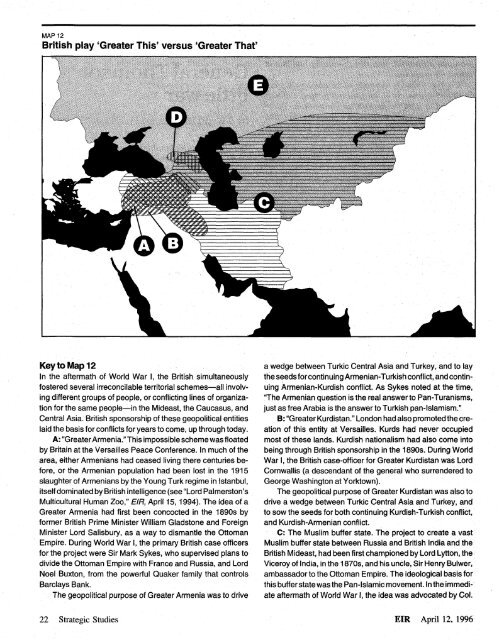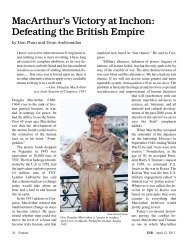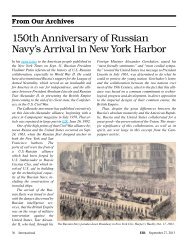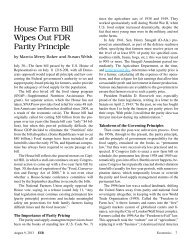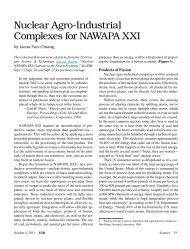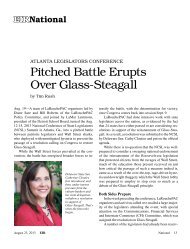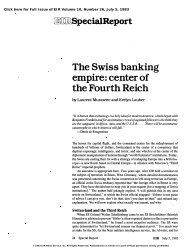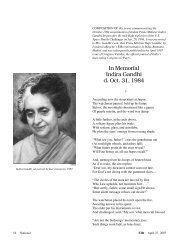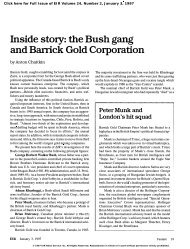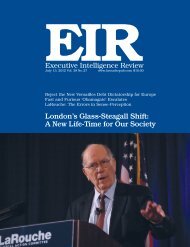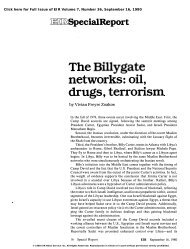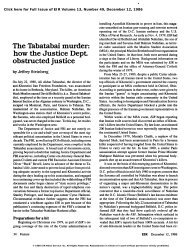Full Issue (PDF) - Executive Intelligence Review
Full Issue (PDF) - Executive Intelligence Review
Full Issue (PDF) - Executive Intelligence Review
Create successful ePaper yourself
Turn your PDF publications into a flip-book with our unique Google optimized e-Paper software.
MAP 12<br />
British play 'Greater This' versus 'Greater That'<br />
Key to Map 12<br />
In the aftermath of World War I, the British simultaneously<br />
fostered several irreconcilable territorial schemes—all involving<br />
different groups of people, or conflicting lines of organization<br />
for the same people—in the Mideast, the Caucasus, and<br />
Central Asia. British sponsorship of these geopolitical entities<br />
laid the basis for conflicts for years to come, up through today.<br />
A: "Greater Armenia." This impossible scheme was floated<br />
by Britain at the Versailles Peace Conference. In much of the<br />
area, either Armenians had ceased living there centuries before,<br />
or the Armenian population had been lost in the 1915<br />
slaughter of Armenians by the Young Turk regime in Istanbul,<br />
itself dominated by British intelligence (see "Lord Palmerston's<br />
Multicultural Human Zoo," EIR, April 15,1994). The idea of a<br />
Greater Armenia had first been concocted in the 1890s by<br />
former British Prime Minister William Gladstone and Foreign<br />
Minister Lord Salisbury, as a way to dismantle the Ottoman<br />
Empire. During World War I, the primary British case officers<br />
for the project were Sir Mark Sykes, who supervised plans to<br />
divide the Ottoman Empire with France and Russia, and Lord<br />
Noel Buxton, from the powerful Quaker family that controls<br />
Barclays Bank.<br />
The geopolitical purpose of Greater Armenia was to drive<br />
a wedge between Turkic Central Asia and Turkey, and to lay<br />
the seeds for continuing Armenian-Turkish conflict, and continuing<br />
Armenian-Kurdish conflict. As Sykes noted at the time,<br />
'The Armenian question is the real answer to Pan-Turanisms,<br />
just as free Arabia is the answer to Turkish pan-lslamism."<br />
B: "Greater Kurdistan." London had also promoted the creation<br />
of this entity at Versailles. Kurds had never occupied<br />
most of these lands. Kurdish nationalism had also come into<br />
being through British sponsorship in the 1890s. During World<br />
War I, the British case-officer for Greater Kurdistan was Lord<br />
Cornwallis (a descendant of the general who surrendered to<br />
George Washington at Yorktown).<br />
The geopolitical purpose of Greater Kurdistan was also to<br />
drive a wedge between Turkic Central Asia and Turkey, and<br />
to sow the seeds for both continuing Kurdish-Turkish conflict,<br />
and Kurdish-Armenian conflict.<br />
C: The Muslim buffer state. The project to create a vast<br />
Muslim buffer state between Russia and British India and the<br />
British Mideast, had been first championed by Lord Lytton, the<br />
Viceroy of India, in the 1870s, and his uncle, Sir Henry Bulwer,<br />
ambassador to the Ottoman Empire. The ideological basis for<br />
this buffer state was the Pan-Islamic movement. In the immediate<br />
aftermath of World War I, the idea was advocated by Col.<br />
22 Strategic Studies EIR April 12, 1996


